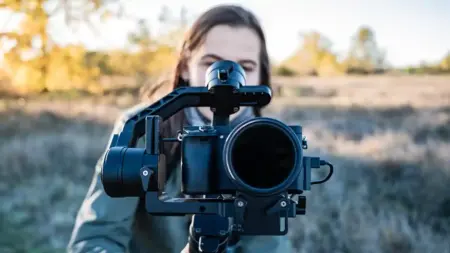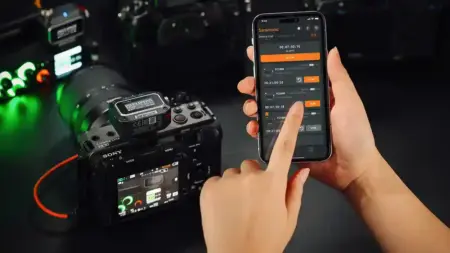The best full-frame cameras offer big resolution and fast processing in a small body size. But if you can’t afford the likes of the Sony A1 or the Canon EOS R5, you can still reap the benefits of shooting with a full-frame sensor. In the last decade we’ve seen the rise of what’s called entry-level full-frame cameras. Or, in other words, beginner full-frame cameras.
Beginning several years ago with the Nikon D600 and Canon EOS 6D, the big camera manufacturers began creating a new space in the market for enthusiasts who wanted the benefits of a full-frame sensor but couldn’t afford or justify the cost of flagship camera prices. Thus the beginner full-frame camera was born, giving photographers an option between their enthusiast APS-C camera and the flagship professional full-frame cameras in the range.
Why buy a full-frame camera over APS-C?
There are a number of reasons why a photographer might want to invest in a beginner full-frame camera over an APS-C format body. First and foremost is the higher resolution. The best beginner full-frame cameras will offer the stunning clarity and resolution that you get from shooting with a full-frame sensor. The bigger sensor and larger photo sites mean greater clarity and better performance in low light. Images will also have less noise than cameras with a smaller sensor.
If you like bokeh and shallow depth of field effects, an entry-level full-frame camera will be able provide these. The other benefit of an entry-level full-frame camera is that flagship tech, such as processors and AF algorithms, are more likely to trickle down to these models than to the APS-C range.
And if it’s a DSLR that you’re using, such as the Canon EOS 6D Mark II, the viewfinder will be larger than on a crop sensor camera.
The best beginner full-frame cameras you can buy today
All of the options on our list of the best beginner full-frame cameras were chosen based on our experience testing them. You might also find our guides to the best cameras for beginners and best professional cameras for beginners and students useful. For a deeper dive into the many different camera types and features available, check out our range of camera buying guides.
Canon EOS RP
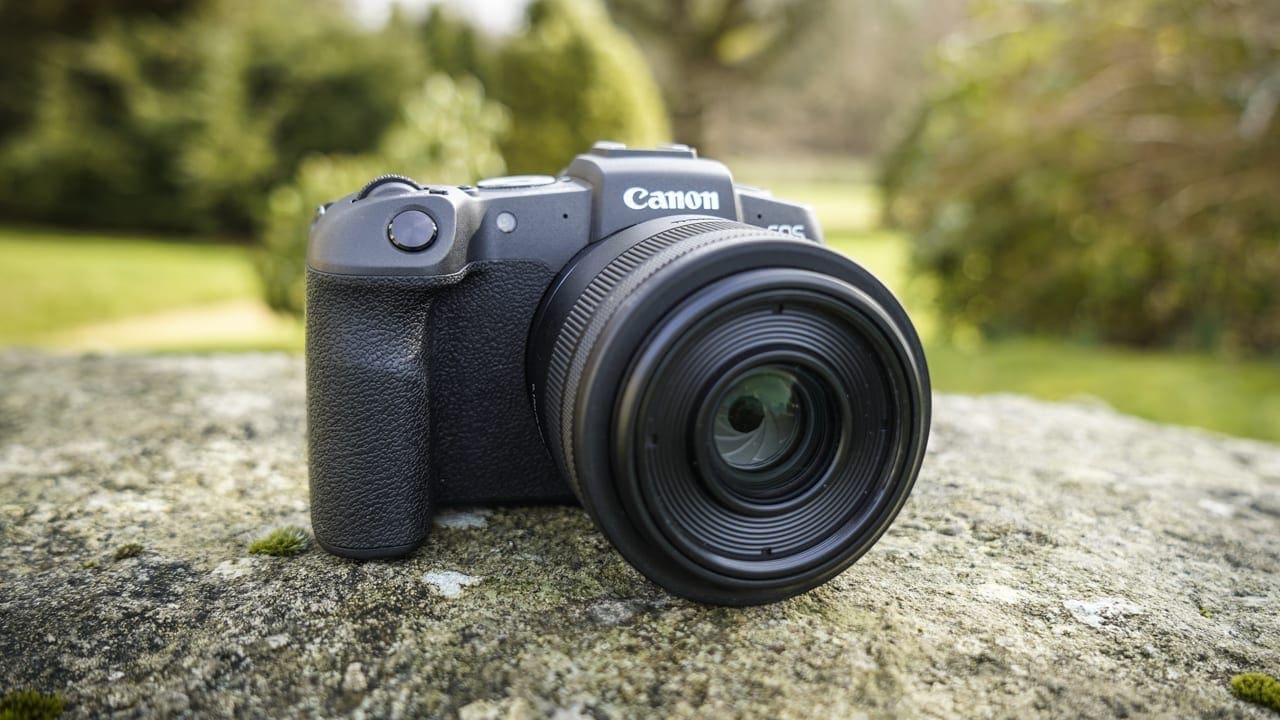
Specification
- Camera type: Mirrorless
- Announced: February 2019
- Lens mount: RF
- Sensor: 26.2Mp full-frame (35.9 x 24mm) CMOS
- Processing engine: Digic 8
- Autofocus system: Phase detection using Dual Pixel CMOS AF with 4,799 focus positions
- Sensitivity range: Stills: ISO 100-40000 expandable to ISO 50-102400, Video: 4K Auto: 100-12800, H2: 102400, Full HD/HD - Auto: 100-25600, H2:102400
- Maximum continuous shooting rate: 5fps until card full with Jpegs or 50 raw files or 4 fps with AF Tracking
- Key video specifications: 4K (3840 x 2160) at 25/23.98fps, Full HD (1920 x 1080) at 59.94/50/29.97/25fps)
- Viewfinder: 0.39-inch 2.36-million-dot OLED
- Screen: Vari-angle 3-inch Clear View LCD II touchscreen with 1.04 million dots
- Dimensions (WxHxD): 132.5 x 85.0 x 70.0mm
- Weight: 485g with memory card and battery
Canon has given the EOS RP an impressively-well specified autofocus (AF) system. As you’d expect with Canon, the imaging sensor is a Dual Pixel CMOS AF device, which means that the focusing uses phase detection. That’s usually faster than contrast detection.
The Dual Pixel design means that every photoreceptor is split in two so they can all play a part in focusing. There are 4,779 user-selectable AF points which cover 88% of the width and 100% of the height of the frame.
According to Canon, the RP’s AF system is operational down to -5EV when using an f/1.2 lens. That’s 1 stop behind the EOS R, but impressive nevertheless.
Face and Eye detection is also on hand and the Eye detection works with continuous AF.
£1049
$999For
- Compact full-frame body
- Vari-angle touchscreen
- Attractively priced
Nikon Z5
Specification
- Camera type: Full-frame (FX) mirrorless
- Announced: 21st July 2020
- Lens mount: Nikon Z
- Sensor: 24.3Mp full-frame CMOS
- Autofocus system: 273-point Hybrid (combines phase and contrast detection) with Eye AF for humans and animals
- Stabilisation: 5-axis in body
- Viewfinder: Electronic 0.39-inch 3,690,000-dot OLED
- Screen: 3.2-inch 1,040,000-dot tilting touch-screen
- Maximum video resolution: 4K (with 1.7x crop)
- Maximum continuous shooting rate: 4.5fps
- Storage: Dual SD/SDHC/SDXC UHS-II
- Connectivity : Wi-Fi, Bluetooth, SnapBridge
- Dimensions (W x H x D): 134 x 100.5 x 69.5mm (5.3 x 4.0 x 2.8inches)
- Weight: 590g/ 1 lb. 4.9 oz body only, 675g / 1 lb. 7.9 oz with battery and memory card but without body cap
Combined with the compact Nikkor Z 24-50MM F/4-6.3 kit lens, the Nikon Z5 makes a very attractive camera for everyday photography and travel as, despite it’s full-frame sensor, it’s smaller than some APS-C format DSLRs.
While the maximum continuous shooting rate of 4.5fps doesn’t really impress in 2021, the Z5 still has a good 273-point phase detection AF system with Eye-detection AF for humans and pets. There’s also an excellent 5-axis image stabilisation system built-in and, of course, the Nikon Z mount which means that the Z5 is compatiblae with Nikon’s growing range of Z optics as well as F-mount lenses via the Nikon FTZ adaptor.
Despite being Nikon’s ‘entry-level’ full-frame mirrorless camera, the Z5 has dual SD card slots that are UHS-II compatible and there’s a tilting touchscreen on the back that makes using the camera intuitive.
£1719
€1999 / $1397For
- Compact size and full-frame sensor
- Nikon Z mount
- Best in class viewfinder
Sony A7C
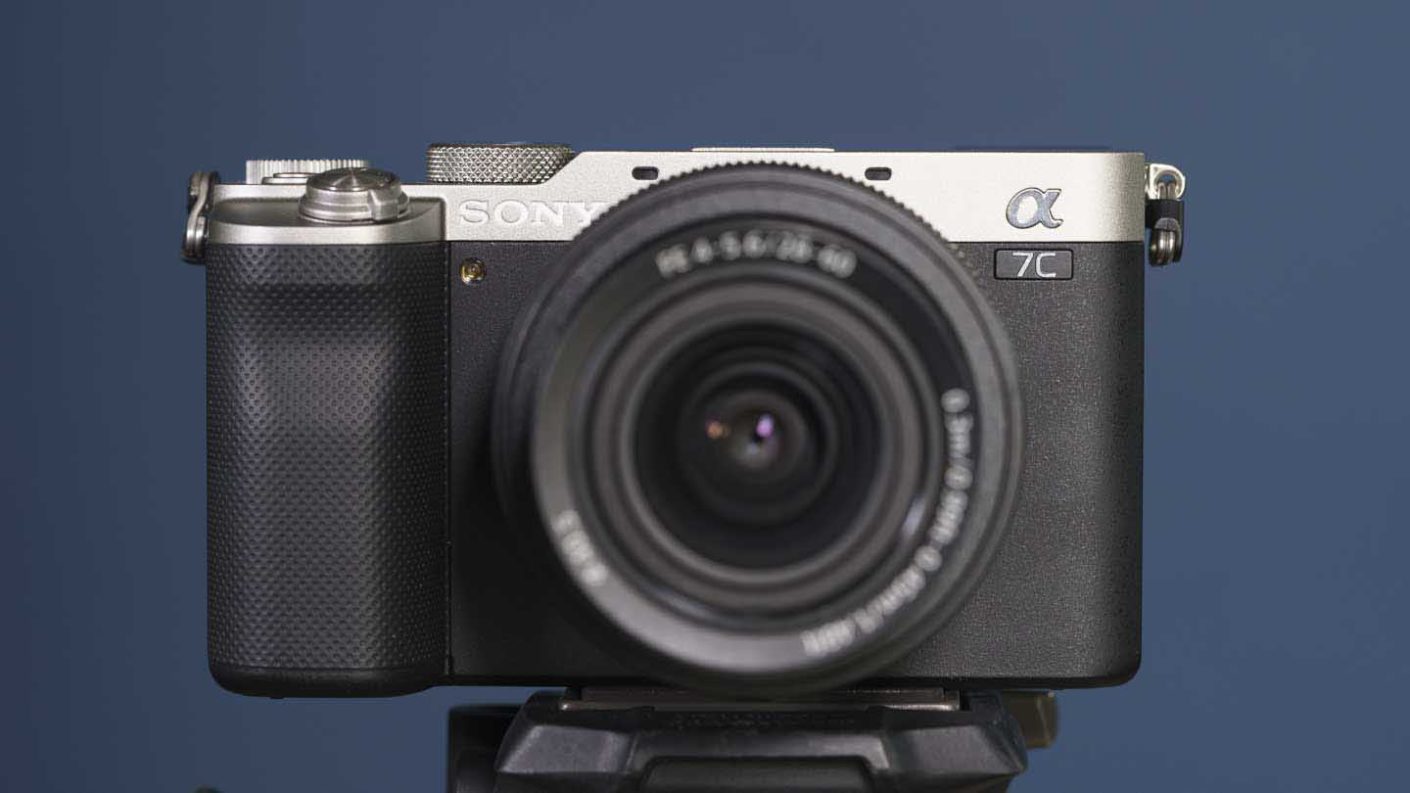
Specification
- Announced: 15th September 2020
- Camera type: Full-frame mirrorless
- Sensor: 24.2Mp Full frame (35.6×23.8mm), Exmor R CMOS sensor
- Processor: Bionz X
- Lens mount: Sony E
- Sensitivity range: ISO 100-51,200, expandable to ISO 50-204,800
- Maximum continuous shooting rate: 10fps with full AF and metering
- Video resolution: 4K: 3840 x 2160 (4:2:0, 8bit, NTSC) (Approx.) 30p (100Mbps / 60Mbps), 3840 x 2160 (4:2:0, 8bit, NTSC) (Approx.) 24p (100Mbps / 60Mbps), 3840 x 2160 (4:2:0, 8bit, PAL) (Approx.) 25p (100Mbps / 60Mbps)
- Autofocus system: Hybrid with 693 phase detection points and 425 contrast detection points
- Eye AF: Stills: Human or Animal, Video: Human
- Viewfinder: 0.39-inch 2,359,296-dot OLED electronic viewfinder
- Screen: Vari-angle 3-inch 921,600-dot vari-angle touchscreen
- Stabilisation: 5-axis in-body image stabilisation giving up to 5EV shutter speed compensation
- Storage: SD/SDHC/SDXC (UHS-I/II)
- Dimensions (W x H x D): 124.0 x 71.1 x 59.7mm / 5 x 2 7/8 x 2 3/8inches
- Weight: 509g / 1lb 2.0oz with battery and card
If you’re looking for a small full-frame camera with Sony’s excellent autofocus and noise control systems then the Sony A7C is the way to go as it’s smallest of the Sony A7-series cameras. It has a flat-topped rectangular body that makes it look similar to the Sony A6600, but there’s also a vari-angle screen rather than a tilting monitor. And inside, the A7C has the same 24Mp sensor and core features as the Sony A7 III.
Paired with the FE 28-60mm f/4-5.6 kit lens., which is a small collapsible optic, the A7C makes an attractive choice for travel and everyday photography.
However, in shrinking down the A7C, Sony also made a few compromises on the handling. There’s no joystick on the back of the camera for example, and there’s only one control dial. In addition, the electronic viewfinder is the type of unit that is more commonly found in APS-C format cameras.
While it’s great to have a vari-angle screen, if you can live without it, and don’t mind a slightly larger camera, then the Sony A7 III, which sits above the A7C in the range, makes a great alternative and costs a little less.
£1709
$1798For
- Small for a full-frame camera
- Vari-angle screen
- Excellent AF system
Panasonic Lumix S5
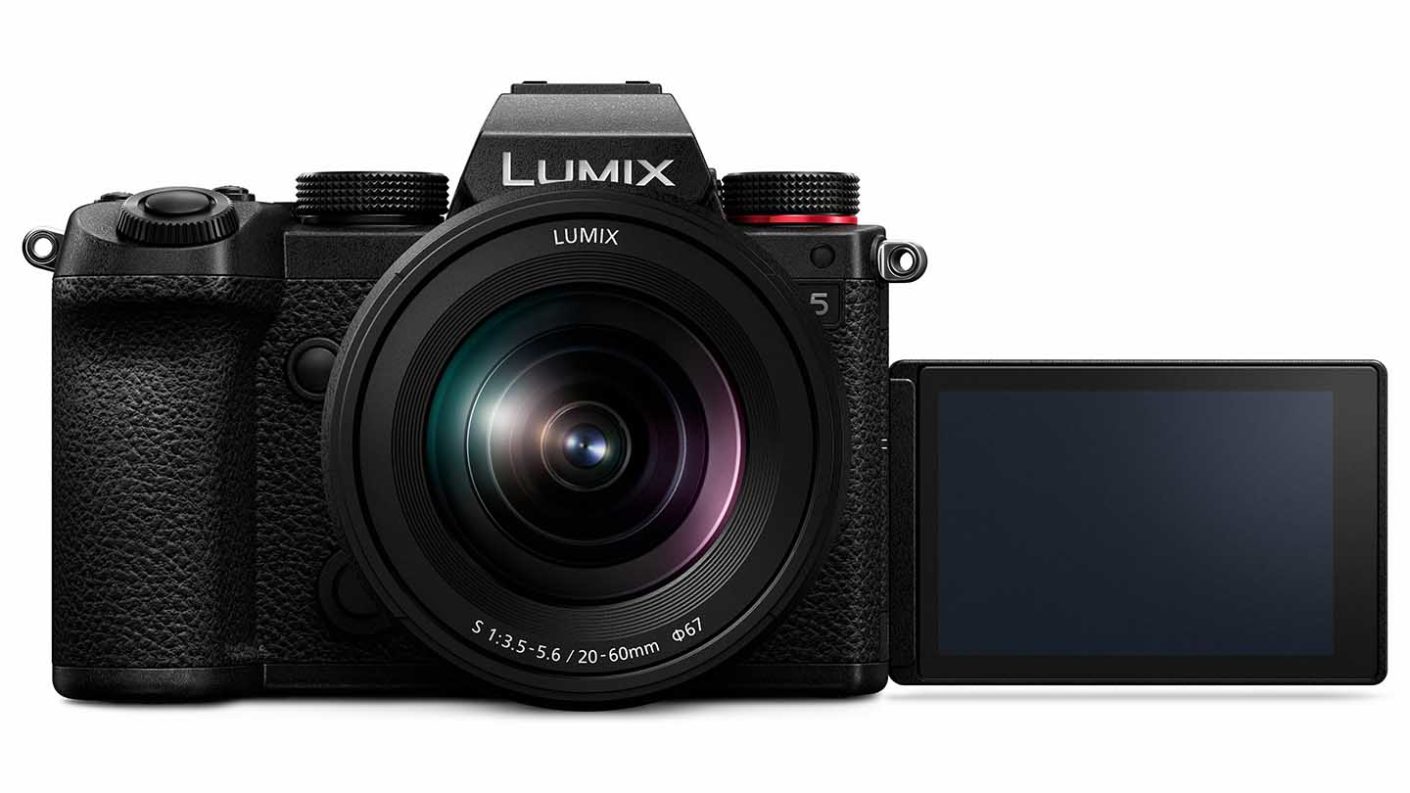
Specification
- Camera type: Mirrorless
- Announced: 2nd September 2020
- Sensor: 24.2Mp full-frame (35.6 x 23.8mm) CMOS sensor
- Lens mount: L
- Construction: Magnesium alloy with dust and splash resistant seals
- Stabilisation: 5 axis in-body IS to 5EV, 6.5 with Dual IS
- Screen: 3-inch 1,840,000-dot vari-angle touchscreen
- Viewfinder: 2,360,000-dot OLED electronic viewfinder with 0.74x magnification
- Key video specifications: 4K (3840x2160) 4:2:2 10-bit LongGOP H.264 29.97/23.98p/25p and 150Mbps for up to 30mins, 4K (3840x2160) 4:2:0 8-bit LongGOP H.264 29.97/23.98p/25p and 100Mbps unlimited, Full HD (1920x1080) 4:2:2 10-bit LongGOP H.264 59.94/29.97/23.98p/50/25p and 100Mbps unlimited
- Slow & Quick motion: Slow: 4K up to 60p in MP4, FHD up to 120p at full width or 180p with narrower angle of view, Quick: 4K to 1p
- Sensitivity: Dual native ISO 100, 6400, Range: ISO100-51,200, expandable to ISO 50-204,800. Dual-native ISO for video
- Shutter speed: 60-1/16,000sec, Bulb to 30mins
- Maximum continuous shooting rate: AF-S or manual focus: 7fps, AF-C: 5fps, 6K Photo 30fps, 4K Photo: 60fps
- Memory: Dual SD card slots, 1 UHS-II, 1 UHS-I
- Weight: 714g with memory card and battery
- Dimensions (WxHxD): 132.6x97.1x81.9mm
Panasonic decided to address some of the criticisms of its S1-series of full-frame mirrorless cameras with the S5 and made it significantly smaller and more affordable. In fact, the Panasonic S5 is smaller than the Micro Four Thirds Panasonic GH5.
Panasonic also completely reworked the S5’s autofocus algorithm to make it more responsive. That work paid off, making the S5 a good choice for general photography and videography, but it’s not quite as snappy as the phase-detection AF systems in cameras like the Canon EOS R6 and Sony A7 III.
The S5 is aimed at people who have started out as photographers and content creators and who want to create more video. Its headline video specification is that it can shoot 4K (3840×2160) footage in 4:2:2 and 10-bit LongGOP H.264 at 29.97/23.98p/25p. That’s when recording internally to an SD-type card.
It can shoot at that quality and resolution for up to 30 minutes, but if you drop to 4:2:0 8-bit 4K footage, it can record indefinitely until the memory cards are full.
In summary, the Panasonic Lumix S5 is a very nice all-rounder that captures attractive stills and video.
£1799
$1998For
- Smaller than the MFT Lumix GH5
- Viewfinder and vari-angle touchscreen
- V-log pre-installed


